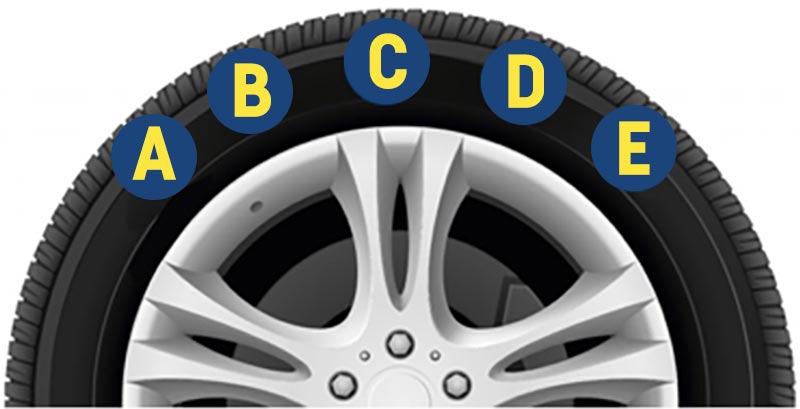
How your tyres can save you money
Fuzz Townshend Tyre TeacherDon’t let your car’s tyres drain the family funds. Fuzz explains.

Your car’s tyres are hugely important, not only regarding you and your family’s safety, but also your bank balance. There are a myriad of ways in which your car’s tyres can actually save you money, helping your motoring budget and making your car handle better at the same time. These few easy-to-follow tips will help to transform your car from a power sapping cash muncher to the more frugal and sweet handling machine it was designed to be.
TYRE PRESSURES

My first tip is easily achievable, but one that I know is often overlooked. Check your car’s tyre pressures on a weekly basis. Perhaps the most convenient time might be when you are visiting a fuel filling station, but ideally this task should be before setting out on a journey, when the tyres are still cold (yes, tyre temperatures increase when driving). Underinflated tyres risk vehicle instability, premature sidewall and outer tread wear, and blow outs. Overinflated tyres can reduce tyre to road contact areas and cause premature wear to the centre section of the tread. They may also affect vehicle handling and be prone to punctures.
“Save time by removing all tyre valve caps before checking the pressures of each one. Replace all of the caps together afterwards.”
PURCHASE WISELY

Don’t confuse budget tyres with budget prices. The two are very different statements. Budget tyres may be cheap, but they may also have limited capabilities regarding lifespan and roadholding. budget prices, on the other hand, may be enjoyed by wise shoppers who have done their product research and chosen a tyre from a quality manufacturer.
Those who purchase Landsail tyres can feel safe in the knowledge that they have chosen a high-quality product from a huge, reputable manufacturer that is able to bring to its customers the benefits of scale, innovation and development. If you’re reading this, we’re on your radar. It’s time to check out our range here.
CORRECT TYRE TYPES
A cynic might suggest that fitting seasonal tyres or those specific to certain terrains is just a way of manufacturers selling more tyres. It’s a fact that having the correct tyres for the usage conditions can not only assist your vehicle’s handling, but it can also reduce component wear throughout the drivetrain, thus saving you money. Think of your car’s tyres as its shoes; summertime flipflops wouldn’t be such a great idea in mid-winter snow and ice. Also think about the type of journeys that you make in your car. Cars used mostly for town and city driving can experience a lot of start and stop traffic, whereas others are used more often for lengthy, unfettered motorway journeys.
Performance use and ‘stickier’ tyre compounds might be the order of the day for some motorists, but the latter may make the car’s engine work harder and thus reduce fuel economy. Landsail has a wide range of tyres covering many individual or multiple needs. Ask your local Landsail dealer to specify the ideal Landsail product for your daily driving conditions.
CORRECT TYRE SIZES

Fitting tyres which are the incorrect size for your car can result in all kinds of unexpected handling and wear characteristics, which can be expensive. Stick to the specifications recommended by vehicle and tyre manufacturers. Wide tyres may indeed give a greater tyre and road contact area, but they can be surprisingly unwilling to allow predictable cornering.
Large diameter rims with low-profile tyres might lend a car an alluring look, but in practice this is likely to result in a much harsher ride, with wheels, tyres and suspension components taking an absolute battering. Correctly specified tyres and wheels will be much kinder to your car and to your pocket.
TREAD THERE – NOT THREADBARE

Badly worn tyres are not only dangerous, but they can also cause a lot of unexpected wear to other car components, all the way through the drivetrain, right up to the engine and to steering, suspension and braking components. In the UK the minimum legal tread depth is 1.6mm in a continuous band across 75% of the central breadth of the tyre. Tread depth gauges are available from good high street motor factors and online. My recommendation would be to commence tyre shopping once tread depth reaches 3mm. One of the jobs of the tread is to pump water away from between the tyre and the road surface, thus preventing ‘aquaplaning’. Aquaplaning is when a film of water gets between the tyre and the road, preventing any frictional contact rendering the car out of control.
To find your nearest Landsail dealer, contact info@landsailtyres.co.uk.
You can also learn more about our full Landsail Tyres range here



